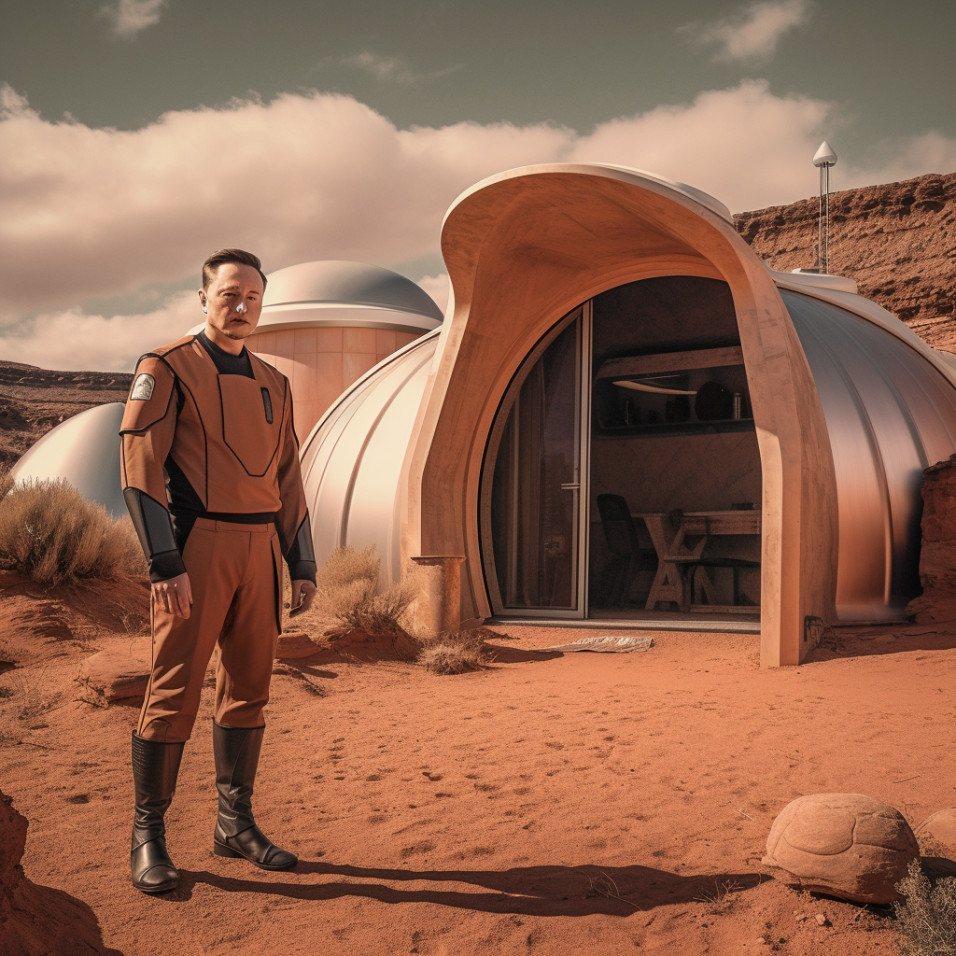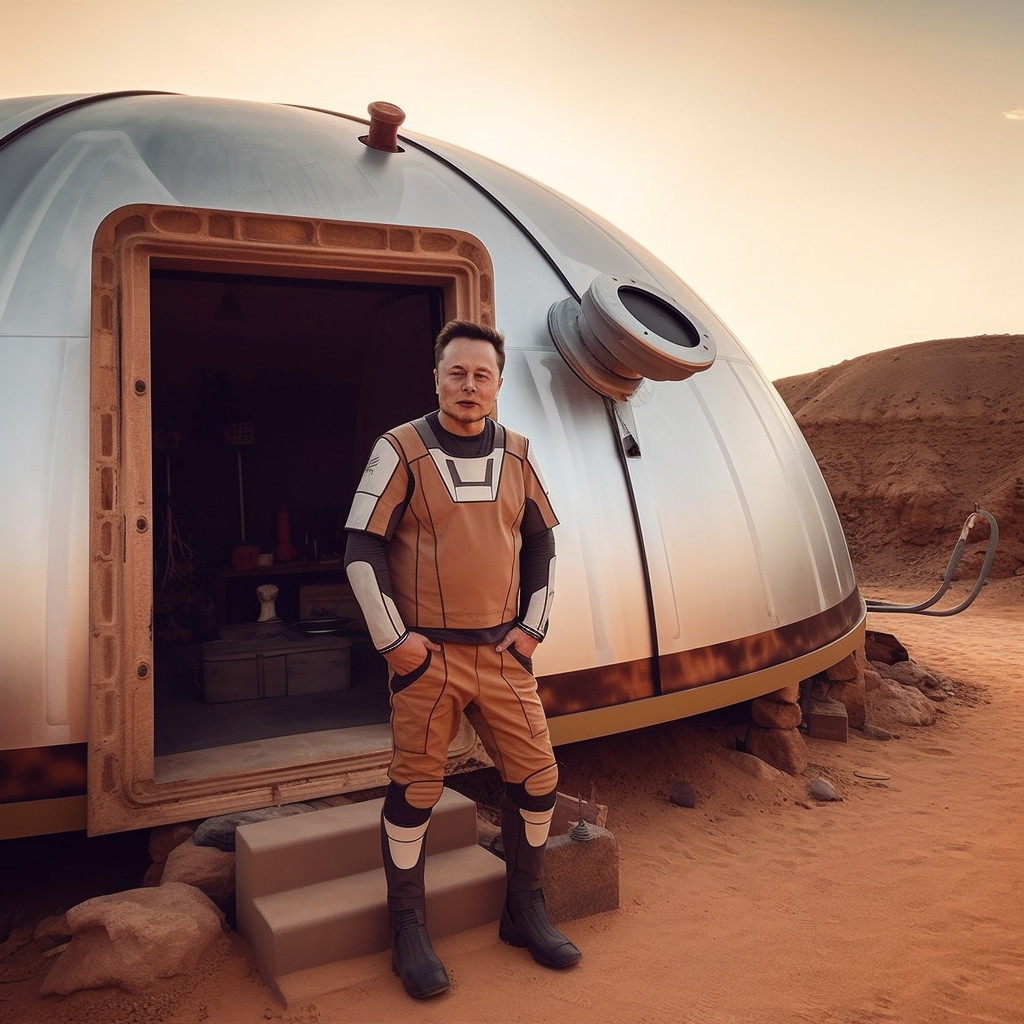Elon Musk, the boundary-pushing visionary behind SpaceX, has made no secret of his ambition to colonize Mars. His plans for the Red Planet include building a self-sustaining city, with a million people living on its surface by 2050. But as exciting as this idea sounds, it raises a host of questions about how humans could survive on a harsh, alien world with no breathable atmosphere, extreme temperatures, and high levels of radiation. In this article, we’ll explore the health and safety protocols that Elon Musk – or any would-be Martian colonizer – would need to consider when moving to Mars.


The Martian Environment and Its Challenges
Atmospheric Differences and Their Impact on Human Health
Mars has an extremely thin atmosphere compared to Earth, with less than 1% of our planet’s air pressure. The Martian atmosphere also has little oxygen, which means that humans cannot breathe it. Therefore, any human settlement on Mars would require a complex life support system to sustain a breathable atmosphere. Without an adequate oxygen supply, humans cannot survive. Carbon dioxide levels on Mars are also much higher than on Earth, creating a significant risk of poisoning.
One of the major challenges of living on Mars is the lack of breathable air and the need to rely on technology to create a livable atmosphere. This means that any human settlement on Mars would need to be entirely self-sufficient, with the ability to generate its own oxygen and remove carbon dioxide from the air. This presents a significant engineering challenge, as it requires the development of new technologies and systems that can function in the harsh Martian environment.
Radiation Exposure and Protective Measures
Mars has no magnetic field like Earth, which means that the planet’s surface is exposed to high levels of cosmic radiation. This radiation can be hazardous to human health, as it can damage DNA and cause cancer and other illnesses. Martian colonizers would need to rely on protective measures to shield them from this radiation, such as building underground shelters or using specially designed spacesuits that offer greater radiation protection than the ones currently in use on the ISS.
In addition to the risks posed by cosmic radiation, Mars also experiences periodic solar storms that can release bursts of high-energy particles. These particles can be even more dangerous than cosmic radiation and can cause significant damage to human health and equipment. Protective measures against these storms would need to be incorporated into any human settlement on Mars.
Dealing with Martian Dust and Soil Contamination
Mars is known for its dust storms, which can last for weeks and are capable of covering the entire planet. The dust is incredibly fine and can damage respiratory systems, such as those of astronauts. Once the dust has settled, it can also contaminate any equipment or facilities left on the planet. The dust contains toxic compounds that are harmful to human life, creating issues for food production and other essential activities.
To deal with these challenges, Martian colonizers would need to develop new technologies for managing dust and soil contamination. This could include the use of air filters and other equipment to remove dust from the air and surfaces. It may also require the development of new materials and building techniques that are resistant to dust and can prevent contamination. Additionally, any food production on Mars would need to be carefully managed to ensure that crops are not contaminated by Martian soil or dust.
Life Support Systems for Mars Colonization
Oxygen Generation and Management
Since the Martian atmosphere cannot sustain human life, it is necessary to generate and manage an adequate supply of oxygen for breathing. This could be done through processes such as electrolysis or the mining of ice on the planet, which can be broken down into oxygen and hydrogen. Once oxygen is generated from these sources, it must then be stored and distributed throughout the colony.
Water Supply and Recycling
Water is essential for human survival, yet there is no liquid water on the Martian surface. However, there is evidence that water once existed on Mars in the form of ice, which could be melted and used. Once water is obtained, it must be recycled to make it safe for human consumption within the Martian colony.
Food Production and Storage
Food production will be vital for sustaining life on Mars. Greenhouses and hydroponic systems have been proposed as the primary means of producing food on the planet. However, these systems will require large amounts of energy and careful management to ensure adequate nutrient absorption by plants. Effective storage solutions must be developed for perishable items such as fresh produce, meat, and dairy products.
Human Health and Well-being on Mars
Physical Health Considerations
The prolonged exposure to low-gravity conditions on Mars poses a threat to human health. Muscle wastage, bone density loss, and cardiovascular effects are all possible outcomes of spending long periods in low-gravity environments. Specialized exercise machines, special suits, or other countermeasures must be developed to mitigate these adverse health effects. Additionally, there will be other challenges related to dust storms, isolation, and limited medical resources, all of which pose risks to human health and well-being.
Psychological Health and Coping Strategies
The isolation, confinement, and distance from the Earth will present significant psychological challenges for anyone living on Mars. Making regular contact with loved ones on Earth, developing meaningful hobbies and interests, and learning coping strategies will be crucial to maintain mental and emotional well-being. In addition, the group dynamics within the colony will play a critical role in ensuring that everyone can work effectively together despite the stresses and strains of living on Mars.
Medical Facilities and Emergency Response
In the event of injuries or accidents, medical facilities must be well-equipped and staffed to deal with emergencies on the Martian surface. However, due to the limited resources and constraints of the planet, medical facilities must balance the necessary equipment with the available space and ensure that all medical professionals have the necessary training and skills. Communication, emergency response protocols, and contingency planning will be essential to minimize the risk of serious harm or fatalities.
Mars Habitat Design and Construction
Building Materials and Techniques for Martian Conditions
Building habitats on the Martian surface will require specialized materials and construction techniques to withstand the harsh environment, such as extreme temperatures and high levels of radiation. Martian colonizers will need to rely on smart design principles that promote efficiency, durableness, and sustainability while minimizing material waste.
Designing for Safety and Efficiency
Martian habitats will require greater levels of safety regulations than those on Earth. The minimal access to medical help, combined with the risk of contamination and equipment failure, necessitates highly efficient and resilient designs. It means that everything – from the placement of equipment to the behaviour of the people who live and work in these habitats – must be considered.
Adapting to Mars’ Gravity and Its Effects on Human Health
The Martian gravitational pull has one-third the strength of Earth’s. Therefore, colonizers will require compatible suits and tools designed to be able to work in this environment while minimizing health risks that may arise due to low-gravity conditions. Additionally, the Mars soil’s dust may lead to several health complications like allergies, lung cancer, or other respiratory related illnesses.
Conclusion
Elon Musk’s ambitious plan to create a self-sustaining Martian city in the next few decades is an exciting and daunting notion. However, before this becomes a reality, Martian colonizers must develop robust health and safety protocols that can sustain human life on a harsh, alien planet. As we’ve seen in this article, adapting to the Martian environment requires cutting-edge technology, smart design solutions, and careful planning. But if we can meet these challenges head-on, who knows what the future may hold for humanity’s exploration and colonization of the Universe.



